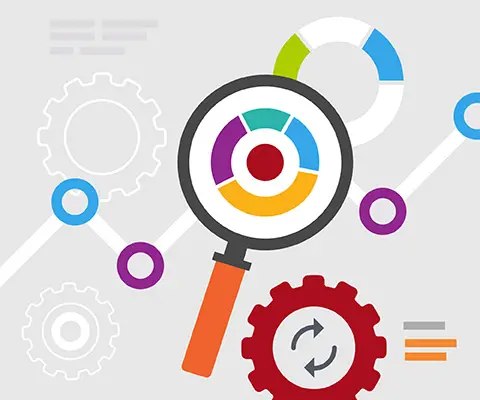
Predictive analytics in action
Added Friday 17 May 2019 by MHR Analytics
Healthcare
Life and death decisions are at the heart of the healthcare sector and that’s why it’s essential that decision-making is driven by data.
Predictive analytics enables the sector to ditch the one-size fits all approach and instead opt for evidence-based healthcare that’s tailored to patients’ specific needs.
For example, this is being used to gain insights into how certain demographic groups respond to treatments by capturing previous patients’ data and using these insights to predict how similar patients will respond to the same treatment.
It’s also being used to treat patients at a very individualised level. For instance, by combining predictive analytics with technologies like Digital Twin, healthcare professionals are able to analyse a patient’s unique physiology to understand how their genetic makeup will impact which drugs they’re able to metabolise.
Drug personalisation is making huge strides in healthcare and this is resulting in far better treatment success rates.
This in turn, is helping hospitals to tackle issues such as lowering the number of patients that are readmitted, in addition to being able to predict which populations are high-risk to certain diseases so that they can prevent people from getting sick in the first place.
Predictive analytics even comes in handy when it comes to the issue of patient no-shows – one of the sectors most costly issues.
One study found that by using predictive models to forecast patient patterns, 4,800 no-shows were anticipated in advanced. Access to such insight is huge – it allows the sector to dramatically reduce this problem by something as simple as sending no-show culprits reminder texts more frequently.
On top of this, doctors can use what-if scenario planning to predict a number of different possible outcomes like how the length of patient stay will impact factors like patient satisfaction and available spend.
Retail
The retail sector is more competitive than ever. Customers will no longer settle for sub-par service – now customer experience is everything.
Predictive analytics allows retailers to use variables like customers' search history, shopping patterns and previously purchased items to create targeted campaigns that resonate with each individual customer.
The ability to see customer needs in advance ensures that customers are presented with the right products at the right time. This works to boost sales and increases the chances of turning one-time buyers into lifelong customers.
Anchor Butter used this approach to create highly relevant and responsive content which generated a 50% increase in active customers, and even allowed them to snag the IPM Gold Award for long-term loyalty.
Retailers are also able to predict the best location to set up shop by using predictive analytics to see where their customers spend most of their time, in addition to setting pricings intelligently based on how much their customers typically spend in certain areas.
Inventory management is also key in retail. Failing to match supply with demand can be disastrous.
Through harnessing predictive analytics, retailers are able to see their inventory levels in real-time. It gives them full visibility right down to granular-level changes such as how a single purchase will affect inventory levels across the business.
Predictive analytics is also proving useful when it comes to product development. Retailers can use optimisation models to make solid predictions about sales forecasts, product demand and ROI.
Finance
In financial services, predictive analytics is being used to identify fraudulent activity through monitoring customer activity, using factors like purchase history and geographical location to flag anything that seems out of the norm.
This additionally works to save time by automating the analysis process, reducing the number of human hours needed to prevent crime.
Predictive analytics is also used to reveal areas that are driving the most profit, as well as those that are weighing the organisation down.
Take this example: a large insurance carrier that was losing market share used predictive analytics to identify 14 real-time indicators of customer loyalty. Using these indicators, the company was able to create a model that could predict with 81% accuracy when customers were likely to leave. This allowed them to take action to prevent customers from leaving, helping them to steal back the market share they had lost.
On top of this, predictive analytics allows the finance sector to ‘cut the fat’ and only offer products and services that are directly in-line with their customers' wants and needs.
By tracking previous banking behaviours they’re able to understand exactly how and what customers are using their services for, helping them to streamline bloated offerings and save unnecessary costs in the long-run.
Education
It’s all good and well attracting great talent, but if universities can’t hold on to this, then recruitment efforts are in vain.
Student retention reigns as an ever-growing concern for HE organisations. Student tuition fees make up the majority of universities’ bottom-line and losing students can be detrimental. This becomes an even bigger concern when second and third year students drop-out, as these students are particularly difficult to replace, and this can result in a revenue gap of at least £9000 per drop-out.
Predictive analytics is helping to minimise this worry through taking into account proven factors such as attendance and online account activity to show universities when a student may be unhappy so that they can intervene before it’s too late.
A good example of this can be illustrated by Georgia State University. They used predictive analytics to identify 800 different factors that put students at risk of leaving and were able to put measures in place to prevent drop-outs.
This ultimately resulted in graduation rates increasing by 22% over the last decade, with students completing their degrees on average half a semester sooner, showing particularly good improvement with risk minority, first-generation and non-traditional students.
Predictive analytics is also used in the student recruitment process. By comparing data from prospective students with current student data, universities can see whether an applicant will be a good fit prior to making a commitment.
Similarly, universities can drill down into the factors that contribute to student success in order to improve statistics like student employment after graduation, student engagement and overall student performance.
Non profits
In the non profit sector, resources are tight and it’s important that measures are taken to optimise efforts and resources.
Predictive analytics gives charities insight into the activities that will give them the most ROI. Through capabilities like scenario-planning, they’re able to forecast fundraising performance in advance and reveal the gaps that might be holding them back from reaching their full potential.
IBM found that 78% of non profits using advanced analytics capabilities like predictive analytics were more effective in performing their mission than those who did not.
Non profits can use predictive analytics to identify the best people to contact in their campaign efforts. By uncovering the characteristics that make up a typical donor, they can focus their efforts and target only those who are most likely to give.
On top of being able to identify who to contact, charities can also understand how to contact donors. Every donor is different and whilst some may respond best to a cold-call, others will connect more with a personalised email.
This can even be taken a step further to create scripts that are tailored to the specific donor. For instance, non profits may discover that highly emotive language is likely to result in more donations from women, but be less successful with male donors.
The uses of predictive analytics are endless, and as technologies continue to advance, it’s becoming a key strategic asset in helping organisations across a wide range of industries reach their wider goals.
When thinking about how to get started with predictive analytics, it can be confusing.
We’ve teamed with leading author, speaker and advisor, Bernard Marr to bring you a comprehensive guide to embracing predictive analytics. Packed with useful advice and inspirational use-cases it will help you understand how you can start using predictive analytics in your own organisation to reach your goals faster. Download your free guide to Embracing Predictive Analytics.
More Information
If you’d like hear more about this, please complete the form below:
